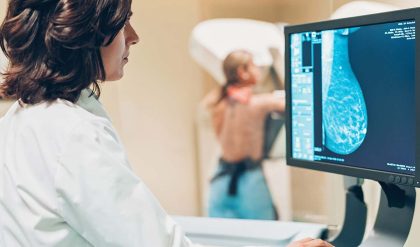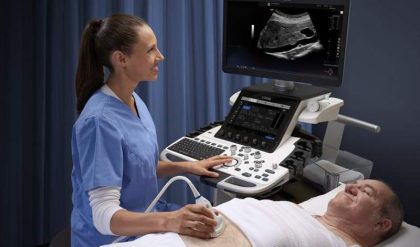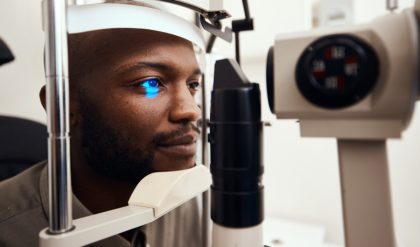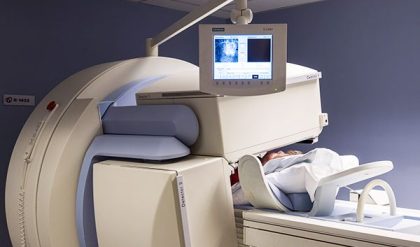
An Overview of radiopharmaceuticals in clinical use
Radiopharmaceuticals primarily consist of a radioisotope which is incorporated into a pharmaceutical with the ability to evaluate a disease state inside the human body. The pharmaceutical is used to transport the radioisotope to a certain organ, tissues or particular cells within the body. In some instances, radioisotopes can be used in their ionic or inert form without attachment to an organic molecule. In addition, biomolecules can be attached to radionuclides such as technetium-99m, rhenium-188, lutetium-177 and yttrium-90. When the radiopharmaceutical (imaging agent) is administered to a patient it is continually monitored by a specific imaging device such as a gamma camera for diagnosis and therapeutic purposes. These systems include SPECT and PET imaging.
Incidentally, radiopharmaceuticals possess the intrinsic property of radionuclides (radioisotopes) which is the natural process of decay. This provides routes to theranostic (therapy + diagnosis) applications. In effect, this fundamental property results from the excess energy produced due to nuclear instability since radioactive decay is the product of an unstable nucleus. In order, for the radionuclide to become more stable it must emit particles (e.g. alpha and beta) or rays such as gamma radiation from the nucleus.
Cancer theranostic treatments include 177lutetium PSMA therapy: this is a treatment for advanced prostate cancer and 177lutetium octreotate therapy for the treatment of neuroendocrine tumours (NETs) including head and neck cancers and gastrointestinal tumours.
Accordingly, radiopharmaceuticals are primarily used in the area of nuclear medicine for the application of medical imaging and/or therapy in the diagnosis and treatment of many disease states: for example, brachytherapy is used to treat prostate cancer. There are numerous radiopharmaceuticals which use technetium-99m and possess many useful properties as a gamma-emitting radionuclide in diagnostic imaging.
Nuclear medicine departments are responsible for the administration of radioisotopes and radiation in the diagnosis of the disease state and potential radiotherapy treatments. The objective of nuclear medicine is to provide information about the functioning of the human body and allow healthcare professionals to diagnosis the disease state of the patient. For example, the heart, liver, thyroid and skeleton can be imaged to detect disease.
Nuclear Medicine uses radiopharmaceuticals to gain insight into the intricate workings of the human body’s organs and biological processes. Currently, diagnostic procedures using radiotracers are routinely used in various healthcare organisations.
The advancement of radiotherapy systems incorporating proton therapy and image-guided applications are used to treat several medical oncological conditions. For example, using radiation to target cancer cells in any part of the human body.
Currently, over 40 million nuclear medicine procedures are performed every year with the demand for radioisotopes is increasing at an annual rate of 5%.
There are over 10,000 hospitals in the world use medical radioisotopes and approximately about 90% of all procedures are for diagnostic medical imaging. The most popularly used radioisotope in diagnosis is technetium-99m, with over 40 million procedures per year. This radioisotope accounts for approximately 80% of all nuclear medicine procedures.
In 2015, the global radioisotope market was worth $9.61 billion, with 80% of this figure accounting for medical radioisotopes. It is projected that the worldwide market for radioisotopes will be in the order of $17.28 billion by 2021. The North America market for diagnostic radioisotopes takes into account approximately 50% of the market share compared to Europe, which accounts for 20% of the market share.
Nuclear medicine departments began to appear in hospitals in the 1950s using iodine-131 to investigate and treat thyroid related diseases. Nuclear medicine continues to expand with the advancement of technologies, which include the hybrid scanner positron emission tomography/computed tomography (PET/CT). This was only achievable through the expansion of accelerators in radioisotope production. For example, the main radioisotope technetium-99m is better quality from nuclear reactors in comparison to the lower quality and higher cost obtained from accelerators.
The radiopharmaceuticals which are used for diagnostic purposes are short-lived radiotracers which emit gamma rays inside the body to produce a 2-D picture: alternatively by the application of tomography to generate a 3-D image. These radiotracers can be introduced into the body either by injection, inhalation or orally.
Consequently, radiation is emitted from various points within the body and gamma cameras are subsequently used for detection and to locate the disease state in order to construct a diagnostic image. The image is then further processed using a computer platform and evaluated by radiologists to locate any abnormalities.
The scanning machine – single photon emission computed tomography (SPECT) is used to diagnose and monitor a broad range of medical conditions. Another scanner used in nuclear medicine imaging is called positron emission tomography (PET) and uses radioisotopes which are produced in a cyclotron.
The majority of positron-emitting radiopharmaceuticals are injected into the bloodstream of the patient which then accumulate in the target tissue. During the decaying process, a positron is emitted which interacts with the nearby electron resulting in the simultaneous emission of two gamma rays (511 keV) in opposite directions. These gamma rays are detectable by a PET camera in order to construct the relevant images.
The most important clinical role of PET imaging is in the area of oncology and this involves the radiotracer fluorine-18 (half-life 109.8 mins). These radiotracers have proven to be beneficial in the detection and evaluation of most cancers. PET imaging is also used for cardiac and brain imaging.
In addition, PET imaging can be combined with computed x-ray tomography (CT) scans to superimpose the two images (PET + CT) to provide information on a range of diseases from dementia to cancer. The advantage of these hybrid machines is that they enable a 30% increase in diagnosis compared to using standard gamma camera techniques.
The principle behind nuclear medicine is to have a radiation source emitting inside the human body so that it can be detected outside the body by using gamma cameras. This is in contrast to external imaging techniques such as the usage of planer x-ray machines. Also, the advantage of nuclear imaging over x-ray techniques is that both the bone and soft tissue can be imaged at the same time.
Gamma imaging can be used to determine the location and concentration of the radioisotope within the body. For example, if a particular organ is not functioning correctly, this would result in the accumulation of the radiotracer. During the uptake of the radiotracer, several images can be obtained to investigate the rate of radioisotope movement, which can be correlated to the function of the organ.
Diagnostic Radiopharmaceuticals
The organs in the human body are able to absorb chemicals. For example, the thyroid takes up iodine and the brain consumes glucose. These observations are the basis to the development of a range of radiopharmaceuticals which include attaching radioisotopes to biomolecules. When a radiotracer enters the body, it is incorporated into its biological pathways, metabolised, and then excreted. These radiopharmaceuticals can be used to investigate the flow of blood in the brain, amongst other organs such as the liver, lungs, heart, kidneys and including investigations into bone growth.
However, the amount of radiopharmaceutical given to a patient can range from a small dose of 5 microcuries to 35 millicuries. To put this into context, the radiation received from these dosages is about the same amount of radiation received from an x-ray study of that particular organ.
Radiopharmaceuticals used in the diagnosis of the disease state
| Disease State | Radiotracer |
| Brain diseases and tumours | 2-deoxy-2-[18F]fluoro-glucose, indium-111 pentetreotide, iofetamine (123I), sodium pertechnetate (99mTc), technetium-99m exametazime, technetium-99m gluceptate, technetium-99m pentetate |
| Cancer and tumours | 2-deoxy-2-[18F]fluoro-glucose, gallium-67 citrate, indium-111 pentetreotide, methionine (11C), radioiodinated iobenguane, sodium fluoride (18F), technetium-99m arcitumomab, technetium-99m nofetumomab merpentan |
| Colorectal disease | technetium-99m arcitumomab |
| Disorders of iron metabolism and absorption | ferrous citrate (59Fe) |
| Heart disease | ammonia-13, 2-deoxy-2-[18F]fluoro-glucose, rubidium-82, sodium pertechnetate (99mTc), technetium-99m albumin, technetium-99m sestamibi, technetium-99m teboroxime, technetium-99m tetrofosmin, thallous-201 chloride |
| Heart muscle damage | ammonia-13, fludeoxyglucose (18F), rubidium-82, technetium-99m pyrophosphate, technetium-99m (pyro- and trimeta-)phosphates, technetium-99m sestamibi, technetium-99m teboroxime, technetium-99m tetrofosmin, thallous-201 chloride |
| Impaired flow of cerebrospinal fluid in the brain | indium-111 pentetate |
| Kidney diseases | iodohippurate sodium (123I), iodohippurate sodium (131I), iothalamate sodium (125I), technetium-99m gluceptate, technetium-99m mertiatide, technetium-99m pentetate, technetium-99m succime |
| Liver diseases | ammonia-13, 2-deoxy-2-[18F]fluoro-glucose), technetium-99m albumin colloid, technetium-99m disofenin, technetium-99m lidofenin, technetium-99m mebrofenin, technetium-99m sulfur colloid |
| Lung diseases | krypton-81m, technetium-99m albumin aggregated, technetium-99m pentetate, xenon-127, xenon-133 |
| Parathyroid diseases including cancer | technetium-99m sestamibi, thallous-201 chloride |
| Pernicious anaemia and problems in absorbing vitamin B12 from intestines | cyanocobalamin (57Co) |
| Red blood cell diseases | sodium chromate (51Cr) |
| Salivary gland diseases | sodium pertechnetate (99mTc) |
| Spleen diseases | sodium chromate (51Cr), technetium-99m albumin colloid, technetium-99m sulfur colloid |
| Stomach and intestinal bleeding | sodium chromate (51Cr), sodium pertechnetate (99mTc), technetium-99m (pyro- and trimeta-)phosphates, technetium-99m sulfur colloid |
| Stomach problems | technetium-99m sulfur colloid |
| Tear duct blockage | Sodium Pertechnetate (99mTc) |
| Thyroid diseases and cancer | 2-deoxy-2-[18F]fluoro-glucose, indium-111 pentetreotide, radioiodinated iobenguane, sodium Iodide (123I), sodium iodide (131I), sodium pertechnetate (99mTc), technetium-99m sestamibi |
| Urinary bladder diseases | sodium pertechnetate (99mTc) |
The diagnostic radioisotope must be able to emit gamma rays and contain enough energy to escape from the body. Ideally, the rate of decay of the radioisotope must be completed quite soon after the imaging.
Technetium-99m is the most extensively used radioisotope in medicine being involved in about 80% of all nuclear medicine procedures. Technetium-99m contains the following characteristics:
· The half-life of technetium-99m is 6 hours which facilitates the investigation of metabolic processes
· The half-life is short enough to minimise the radiation dose to the patient
· The decay process involves an ‘isomeric’ process by emitting both gamma rays and low energy electrons
· No high-energy beta emission is associated with technetium-99m which results in a low radiation dose to the patient
· The low-energy gamma rays emitted from inside the body are easily detectable by a gamma camera positioned outside the body
· The chemistry of technetium allows for the incorporation of this radiotracer in a range of biomolecules
· Technetium-99m is produced using the molybdenum-99 generator, which is portable




